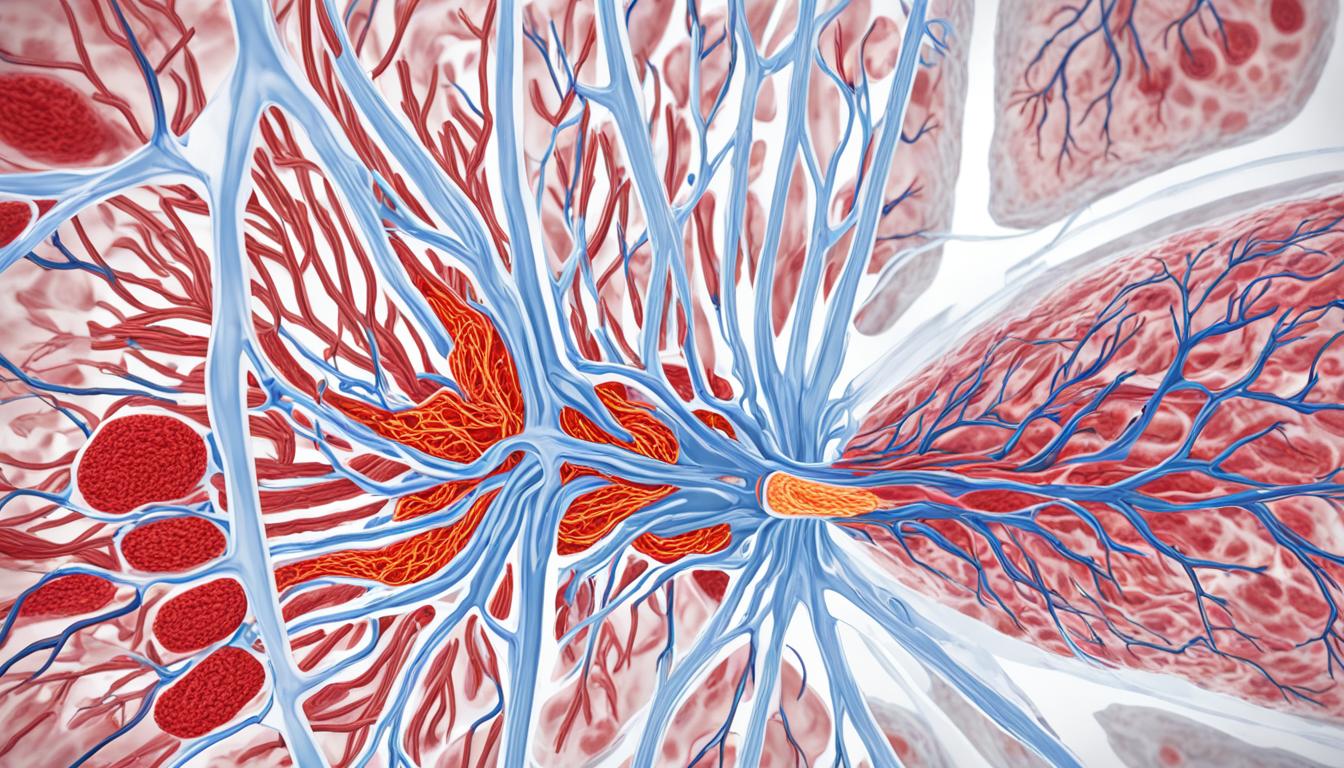Celiac artery compression, or median arcuate ligament syndrome, is a rare issue. It happens when the celiac artery gets squeezed by a ligament in the diaphragm. This can lead to pain after eating, losing weight, and feeling sick.
This condition is often diagnosed with imaging tests. These tests can show the artery is being compressed. Doctors need to think about this problem when a patient has constant belly pain and loses weight without cause.
To fix celiac artery compression, doctors can cut the tight ligament. They might do this with regular surgery or through small cuts using a camera. The goal is to help the artery work better.
Another treatment being explored is stem cell therapy. It aims to improve blood flow without major surgery. This could be a big step in treating celiac artery compression and its tough symptoms.
As we learn more, treatment for celiac artery compression gets better. It’s key for doctors to keep up with the latest ways to find and treat it. This helps patients get the best care possible.
Key Takeaways:
- Celiac artery compression, or median arcuate ligament syndrome (MALS), is a rare condition characterized by the compression of the celiac artery by the median arcuate ligament of the diaphragm.
- Symptoms of celiac artery compression include postprandial abdominal pain, weight loss, and nausea and vomiting.
- Imaging studies, such as computed tomography angiography, are used for the diagnosis of celiac artery compression.
- Treatment options include surgical division of the fibrous band causing the compression and innovative therapies like stem cell therapy.
- Stem cell therapy has shown potential in promoting angiogenesis and improving blood flow in patients with celiac artery compression.
Clinical Characteristics and Diagnostic Approaches for Celiac Artery Compression Syndrome
Celiac artery compression syndrome causes post-eating stomach pain, weight drop, and feelings of sickness. It happens because the celiac artery is squeezed. This squeezes it from time to time, limiting blood flow.
For finding this, doctors use imaging like CTA scans. CTA scans show clear pictures and can spot the “hook sign.” This sign means the celiac artery is bent and pressed on by a ligament in the diaphragm.
Other tools like Doppler ultrasound and catheter angiography help double-check this problem. They show the doctors how bad the squeezing is. This helps plan the right treatment.
Diagnostic Approaches for Celiac Artery Compression Syndrome:
- Computed tomography angiography (CTA)
- Doppler ultrasound
- Catheter angiography
CTA gives sharp images to find the “hook sign” easily, confirming the syndrome. Doppler ultrasound and catheter angiography are also used to check and measure how much the celiac artery is squeezed.
| Imaging Studies | Advantages | Disadvantages |
|---|---|---|
| Computed tomography angiography (CTA) | – High-resolution images – Ability to visualize the “hook sign” – Non-invasive |
– Exposure to radiation – Contrast dye may cause allergic reactions |
| Doppler Ultrasound | – Non-invasive – Real-time visualization of blood flow |
– Operator-dependent – Limited visualization of surrounding structures |
| Catheter Angiography | – Direct visualization of the celiac artery – Invasive and provides precise measurements |
– Invasive procedure with associated risks – Requires expertise |
CTA takes clear images without cutting into the body and easily finds the “hook sign” of celiac compression. But, it uses x-rays and the dye can cause reactions in some people.
Doppler ultrasound checks blood flow without surgery and shows it live. Catheter angiography looks inside the artery directly, but it’s a surgery with risks.
Innovative Treatment Options for Celiac Artery Compression Syndrome
The approach to managing celiac artery compression syndrome includes surgical and non-surgical methods. Surgery can cut the fibrous band causing the issue. This step reduces pressure on the celiac artery.
The method of surgery – whether open or laparoscopic – depends on how severe the situation is. In recent times, treatments such as stem cell therapy have shown promise. They seek to encourage the formation of new blood vessels.
These new vessels can help to improve blood flow in the area. Even though stem cell therapy is promising, more studies are necessary. The main goal of any treatment is to ease symptoms and boost blood flow.

